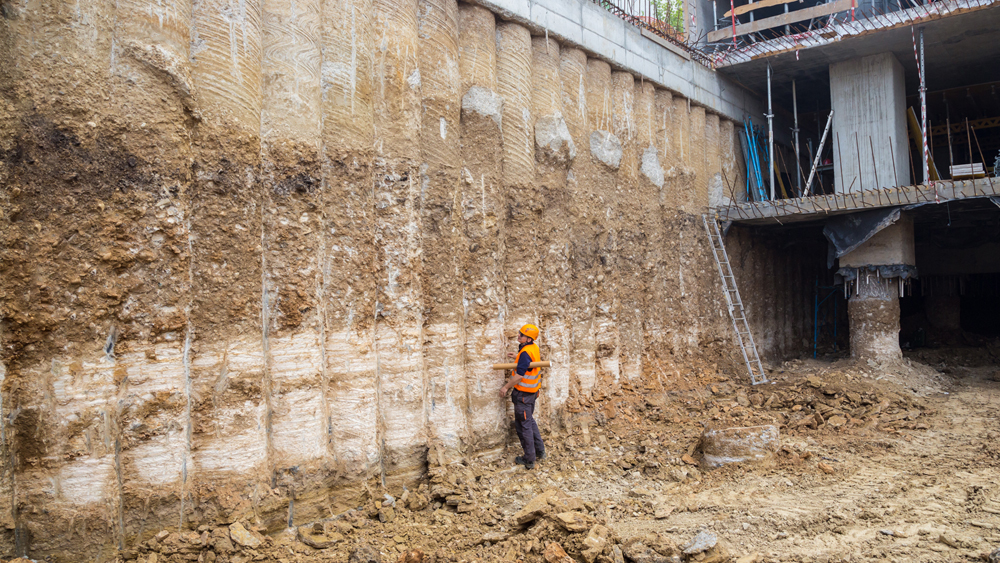Top Consulting Engineers Johannesburg: Providing Professional Solutions for Facilities Advancement
Wiki Article
Just How Consulting Civil Design Firms Contribute to Effective Job Administration and Style Application
Consulting civil design companies are indispensable to the success of construction jobs, combining technical efficiency with strategic oversight. By concentrating on design optimization and threat mitigation, these firms ensure that jobs are not just sensible but likewise lasting and cost-efficient.Duty of Civil Engineers
Comprehending the function of civil designers is important for the successful management of building and construction projects. Civil designers serve as the backbone of infrastructure development, guaranteeing that jobs are developed and performed to satisfy security, capability, and sustainability requirements. Their knowledge encompasses different elements of design, consisting of structural, environmental, and geotechnical specialties.Civil engineers are accountable for performing feasibility research studies, which analyze the practicality of proposed projects by analyzing financial, technical, and ecological variables. They establish thorough blueprints and specs, integrating ingenious remedies to enhance products and sources. During the building stage, civil engineers oversee the task, collaborating with stakeholders, contractors, and designers to guarantee adherence to design specs and regulative requirements.

Job Planning Approaches
Reliable project planning strategies are vital for ensuring that building and construction jobs are performed smoothly and successfully. Consulting civil engineering firms play an important role in this process by employing detailed preparation approaches that resolve numerous task stages. At first, a complete assessment of project scope and client requirements is carried out, allowing for the recognition of essential turning points and deliverables.Moreover, these firms make use of devices such as Gantt charts and task administration software to develop detailed timelines, making it possible for reliable scheduling of jobs and resource allocation. This organized approach aids to expect potential traffic jams and designate necessary sources proactively. Danger monitoring is another vital element; firms perform danger evaluations to identify prospective issues that can occur throughout the project's lifecycle, applying reduction methods to minimize interruptions.
In addition, stakeholder engagement is emphasized throughout the preparation phase. Normal interaction with customers, contractors, and regional authorities makes certain that all events are aligned with job goals and timelines. By incorporating these methods, seeking advice from civil design companies enhance the likelihood of task success, ensuring adherence to budget restrictions and regulative needs while cultivating a joint setting.
Design Optimization Methods
Style optimization techniques are necessary for enhancing the efficiency and sustainability of civil engineering tasks. These techniques involve the systematic assessment of design parameters to achieve the very best feasible end results while decreasing prices and source usage. By using sophisticated computational tools and algorithms, engineers can assess various layout choices and choose the most reliable choices based on certain job criteria.One commonly utilized strategy is parametric design, which enables the manipulation of layout variables to observe their effect on overall project efficiency. This iterative process brings about cutting-edge services that not only meet useful needs yet likewise stick to ecological requirements. Additionally, methods such as value design focus on enhancing project components to take full advantage of value while lowering unneeded expenses.
Moreover, the integration of Structure Information Modeling (BIM) facilitates much better collaboration among stakeholders, allowing real-time adjustments and improvements to designs. This all natural view cultivates a detailed understanding of the project, causing informed decision-making. Eventually, reliable design optimization strategies result in enhanced task timelines, reduced waste, and boosted structural performance, adding to the general success of civil design endeavors.
Danger Monitoring Methods
Threat administration approaches are vital in making certain the geotechnical engineering in south africa successful distribution of civil engineering jobs, as they assist identify, analyze, and alleviate possible risks that might affect task end results. Effective risk management is a methodical process that entails the recognition of threats, assessment of their likelihood and impact, and the development of strategies to address them.Consulting civil engineering firms normally use a combination of qualitative and measurable threat assessment techniques (geotechnical engineering companies in south africa). Qualitative methods, such as brainstorming sessions and professional interviews, assistance gather understandings on prospective dangers from different stakeholders. Alternatively, quantitative techniques entail statistical analysis and modeling to determine the probability and prospective effect of recognized risks
When risks are examined, firms execute mitigation approaches, which may include danger evasion, transfer, reduction, or acceptance. This can include revamping job parts to remove threats or securing insurance coverage to balance out potential economic losses. Continual tracking and review of threats throughout the job lifecycle are additionally necessary, enabling prompt adjustments to take the chance of administration strategies as new dangers emerge.
Collaborative Communication Practices
Enhancing task results via collective communication practices is important for getting in touch with civil design firms. Reliable communication cultivates a society of transparency and depend on among stakeholders, which is important for the effective execution of design tasks. By carrying out structured communication networks, firms can make certain that all celebrations-- clients, specialists, and employee-- are lined up on project timelines, goals, and deliverables.Routine meetings, both official and casual, promote the exchange of concepts and comments, enabling real-time analytic and decision-making. Using collaborative tools such as task monitoring software motivates paperwork and tracking of development, while enabling immediate access to important details.
In addition, active listening and open dialogue are critical elements in a collective setting. By valuing diverse viewpoints, firms can innovate and adjust styles that satisfy both technological needs and customer assumptions. Additionally, fostering a team-oriented atmosphere minimizes misunderstandings and boosts the total high quality of work.

Final Thought
To conclude, speaking with civil design companies are important to effective task administration and style implementation. By employing strategic preparation, design optimization, and efficient danger monitoring, these firms enhance task effectiveness and sustainability. Their commitment to collective interaction further makes certain stakeholder positioning and fosters a participating setting. Eventually, the proficiency and techniques utilized by seeking advice from civil engineers substantially add to accomplishing job objectives while optimizing and reducing costs resource use.
In verdict, speaking with civil design companies are indispensable to successful job administration and layout implementation.
Report this wiki page